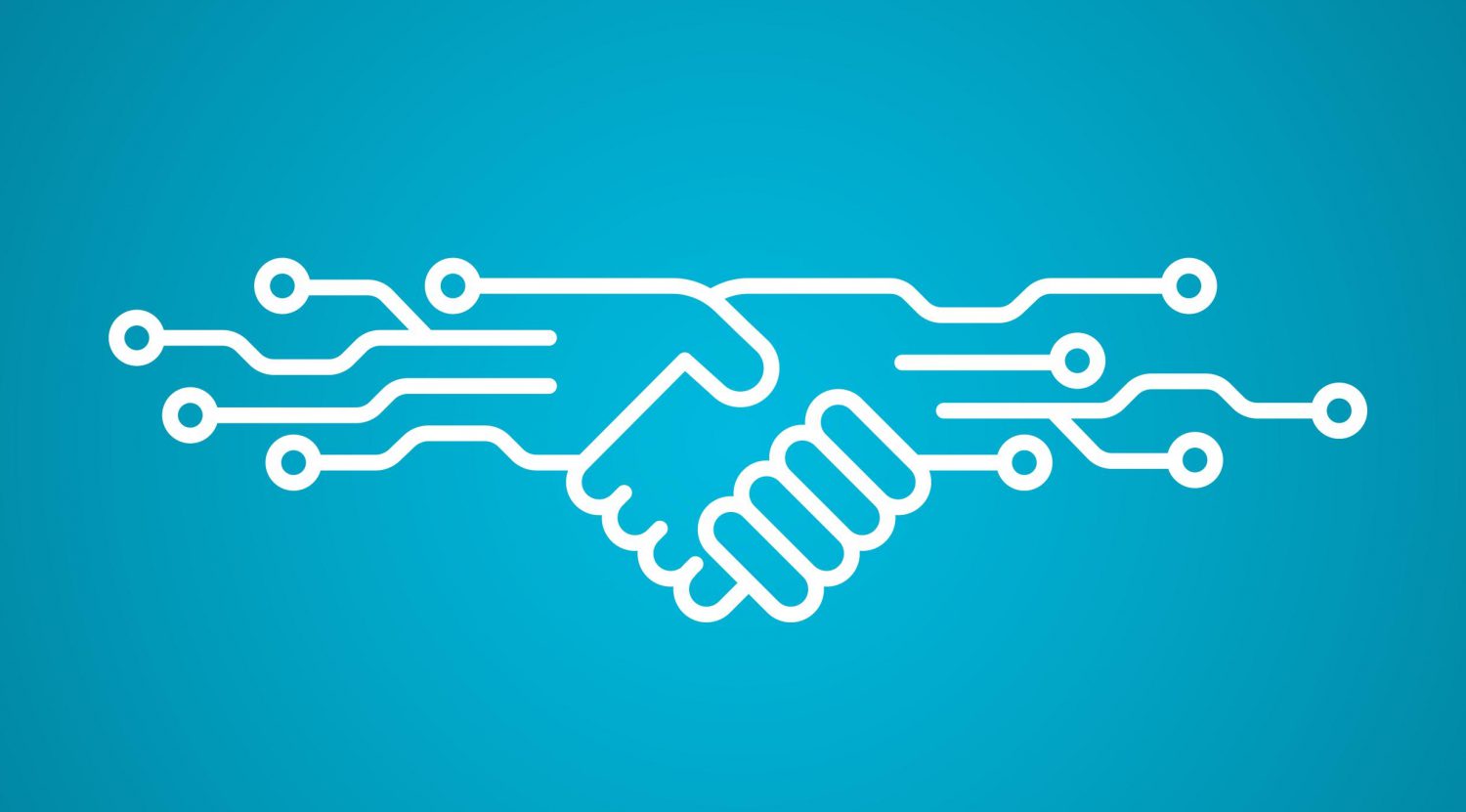This year was a noteworthy benchmark in the history of Decentralized Finance. The larger adoption of digital currencies and exchanges by both non-financial and financial institutions set the foundation for steady growth in the years ahead. Therefore, it is worthwhile for digital businesses to embrace the development of Smart Contract-powered DeFi solutions that are poised to evolve shortly.
Decentralized Finance solutions development, implies creating an exchange platform using distributed ledger records and Smart Contracts. Smart Contracts streamline the condition-matching, evaluation, and transaction processes, while the distributed ledger records and displays all the exchange orders. This prevents financial leaders from discovering and pursuing appropriate trading partners and methods. Though Blockchain acts as the core technology for DeFi development, leaders can facilitate peer-to-peer (direct) transactions and eliminate the need for intermediaries.
Does the Obscurity of CEXs Lead to the Rise of the DeFi Market?
Many industry leaders recommend that the dynamic financial regulatory conditions can be easily met with DeFi Smart Contract development. However, the radical rise in DEXs’ trading volume and demand for decentralized exchange development cannot be attributed to the fulfillment of regulatory conditions alone.
The lack of liquidity and hack schemes of centralized exchanges was also a great stimulus, leading to higher adoption of DEXs. Several businesses have encountered perilous attacks on centralized exchanges in the past few years. As per recent research, the security level of Decentralized Exchanges is 89% more secure than Centralized Exchanges (CEXs). Besides, CEXs can no longer support the evolution of cryptocurrency. Hence, Smart Contract-supported DeFi development will remain a prominent trend in the upcoming years.
3 Key Essentials of DeFi Smart Contract Development
Before learning the trends and advancements in the DeFi ecosystem, it’s crucial to grasp the core concepts that reinforce this financial modernization. DeFi isn’t just an off-the-shelf tool; it’s a multifaceted and innovative system built using Smart Contract programming, Blockchain technology, and tokens.
Smart Contracts and Blockchain Technology
Smart Contracts (autonomous agreements with conditions directly embedded into computer programs) act as the foundation of DeFi. These contracts help DeFi systems automate financial processes, guaranteeing that a transaction takes place when stipulated conditions are met. Ethereum is the go-to Blockchain platform for developers. This platform is designed to write and maintain the code logic of Smart Contracts. This way, tasks like lending, borrowing, and trading can be automated without the involvement of traditional financial mediators.
Moreover, Ethereum Blockchain technology offers an immutable ledger on which DeFi functions. Data and transactions are recorded in a secure and distributed way while ensuring greater transparency.
Liquidity Assets and Optimization Protocols
Liquidity provisioning is an approach to delivering assets to decentralized exchange network users, allowing them to buy/sell utilities. As a result, network users earn rewards and fees. Another popular practice that stimulates business users to adopt the DeFi ecosystem is Yield Farming. This approach involves augmenting the utilization of liquidity assets to maximize profits. This further helps business users to earn interest and lending fees.
Governance Tokens
Tokens that offer DeFi ecosystem users decision-making power are known as Governance Tokens. By acquiring these tokens, users can implement required changes, upgrades, and modifications to the transaction protocol through a voting approach. This approach empowers the business users to have control over the management of DeFi exchanges.
Top DeFi Trends & Business Opportunities Expected to Ascend in the Future
Crypto Bridges
Crypto bridges are software protocols that can be programmed similarly to Smart Contracts. By integrating this in DeFi solutions, business users can simplify the movement of data and assets between different Blockchain networks. This fosters interoperability in the Decentralized Finance ecosystem. They work like connectors and bridge the gap between disparate Blockchain networks, allowing users to transfer utilities impeccably from one network to another. As a result, bridges improve asset liquidation by reducing slippage and enhancing trading experiences.
Reliable crypto bridges, which rely on decentralized custody algorithms and Smart Contracts, provide a high grade of security and transparency to DeFi solutions. Users can visualize the execution of these bridges on the Blockchain, lessening the fraudulent risks.
Zero-Knowledge Proof Protocols
Zero-knowledge-proof protocols hold massive potential in the domain of DeFi and Smart Contract applications. It is a sequence of cryptographic procedures that can be programmed and incorporated into DeFi solutions. This allows a party in a DeFi network (prover) to show to another party (verifier) that a transaction is reliable without exposing any further evidence about the transaction itself.
In other words, the prover assures the verifier of the transaction’s legitimacy by offering proof while keeping the actual data concealed. This methodology ensures confidentiality, privacy, and trust in DeFi transactions. Moreover, it eliminates the need for exorbitant intermediaries, reviews, and complex data-sharing practices, which leads to cost savings for businesses and investors. Developers from an experienced Smart Contract development services provider can implement this scheme in DeFi products.
Query Mechanisms
A decentralized transaction requires precise price feeds to perform exchanges at reasonable market rates. However, adding external data sources with a Blockchain network is not an ideal approach. This is where query mechanisms come in!
Query mechanisms are the frameworks through which DeFi tools interact with Blockchain to integrate and access external information. These mechanisms involve different methodologies, protocols, and consensus protocols designed to capture, verify, and add data from diverse sources into the Blockchain network. The choice of query mechanism greatly impacts the receptiveness, reliability, and decentralization of the data inputted to DeFi applications.
NFT DeFi Integration
Both NFTs and DeFi are applications of distributed financial services combined to largely modernize transactions across the crypto domain. Non-Fungible Token’s capability to validate ownership and enables DeFi applications to transact the digital assets. And NFT participants benefit from DeFi execution, enhancing liquidity and interoperability. One of the promising use cases of the NFT-augmented DeFi system is debt management.
Brex is one of the US’s emerging FinTech startups, which manages several financial projects in the areas of credit card and wealth management. Their physical ledger management significantly hampered the process of debt validation and introduced some inconsistencies in processing. To overcome this, they collaborated with a leading Blockchain service provider to implement a DeFi application powered by Non-Fungible Tokens.
“This approach helped us process debt authentications 5X faster than the previous ledger system, says Robert, Finance Head.”
Regulatory Challenges and Responses
Due to the fast evolution of the DeFi ecosystem, regulatory and legal concerns have arisen. To cross the gray regions, enterprises must consider working with industry experts. By proactively engaging with a Blockchain Smart Contract development company, enterprises can effectively trade off innovation and compliance. These experts can:
- Establish a regulatory framework that supports the constant growth of DeFi platforms
- Bridge the knowledge gap between tech and business teams and contribute to strategic decision-making
- Address concerns related to Anti-Money Laundering, consumer KYC/protection, and privacy procedures
By working together, both parties can discover potential threats and create risk mitigation techniques. This approach can help enterprises create a robust and profitable DeFi infrastructure, improving user confidence and protecting data against potential attacks.
Closing Thoughts
Though there are limitations, tech leaders should understand DeFi’s transformative potential and implement robust platforms. DeFi holds the potential to transform the distinctive financial system and foster financial inclusion by offering distributed and open access to financial services. The regulatory problems related to DeFi can be fixed through strategic regulation and collaboration.
Content writing professional with more than 5 years of experience in IT industry.



















































































































































































